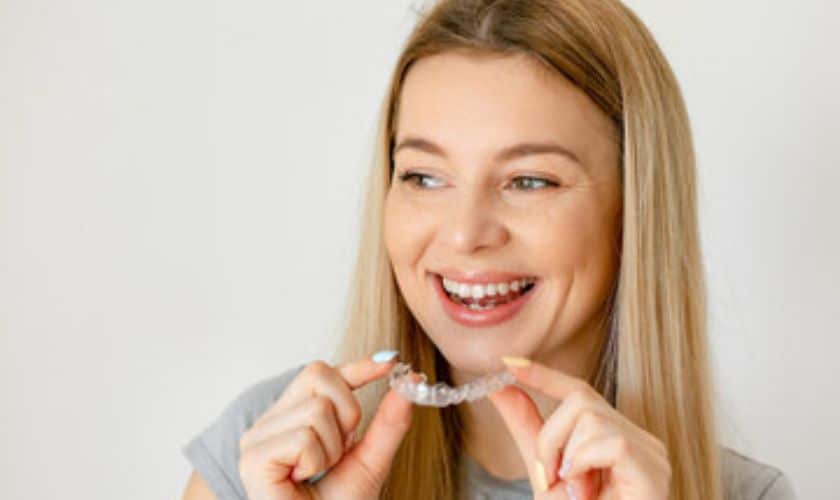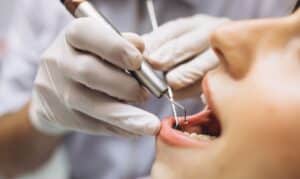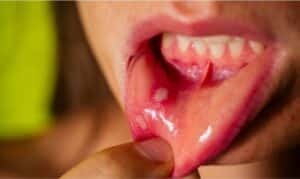Have you ever wondered if Invisalign can fix an overjet? It’s a common orthodontic problem that many people struggle to understand – but the dentists at Legacy Dental SA have put together a comprehensive guide to help you understand it. Read on to understand what an overjet is, how Invisalign treatment can help address them, and learn about other options available for fixing your smile.
What is an Overjet, and What Causes it?
An overjet occurs when the upper teeth protrude beyond the lower teeth. Several things, including genetics, poor dental hygiene, and thumb sucking, can cause overjets. If you have an overjet, you may be self-conscious about your smile or need help to eat and speak properly. Invisalign can help correct an overjet by gradually moving the teeth into their proper position. If you’re considering Invisalign to fix your overjet, consult a qualified dentist to see if it’s the right treatment for you.
Can Invisalign Fix an Overjet and How?
An overjet is a common dental problem where the upper teeth protrude too far forward about the lower teeth. This can cause aesthetic concerns and lead to functional problems such as difficulty eating or speaking. Invisalign is an effective treatment option for correcting an overjet, and results can typically be achieved within 6-12 months.
Invisalign works by gradually moving the teeth into their correct position using a series of clear, removable aligners. Each aligner is worn for approximately two weeks before being replaced with the next in the series. As treatment progresses, the aligners will apply gentle pressure to the teeth, gradually moving them into place.
While Invisalign can treat an overjet of any severity, more complex cases may require additional treatment options such as dental bonding or surgery. Invisalign is an effective and convenient option for correcting an overjet, helping you achieve a straighter, more aesthetically pleasing smile.
Advantages of Using Invisalign to Treat an Overjet
If you want to improve your smile but don’t want to deal with the hassle of traditional braces, Invisalign might be the right treatment option. Here are some of the advantages of using Invisalign to treat an overjet:
Invisalign is practically invisible, so you can wear them without feeling self-conscious about your appearance.
They’re removable so you can take them out for special occasions or to eat and drink what you want.
They’re more comfortable than traditional braces, so you can wear them for longer periods without experiencing discomfort.
Invisalign is a great option for people who want to improve their smile without dealing with the hassle of traditional braces. If Invisalign is right for you, talk to your dentist about whether it’s a good option for treating your overjet.
Disadvantages of Treating an Overjet With Invisalign
While Invisalign is an excellent choice for treating many dental issues, it may not be the best option for treating an overjet. Some of the potential disadvantages of using Invisalign to treat an overjet include:
- The length of treatment may be longer than with other options.
- It may be more expensive than other options.
- There is a higher risk of relapse after treatment.
Alternatives to invisalign fix overjet
If you’re considering invisalign fix overjet, you may wonder if there are any alternative options. The good news is that several alternatives to Invisalign can also effectively treat overjet of teeth.
One alternative to Invisalign is traditional braces. Braces are often more effective than Invisalign in correcting more severe cases of an overjet. However, they can be more uncomfortable and visible than Invisalign.
Another alternative to Invisalign is clear aligners. Clear aligners are similar to Invisalign in that they are nearly invisible and can be removed for eating and brushing your teeth. However, Invisalign may be more effective than clear aligners in treating more severe cases of an teeth overjet.
Finally, another alternative to Invisalign is jaw surgery. Jaw surgery is usually only recommended for severe cases of an overjet that have not responded well to other treatments. Jaw surgery involves making cuts in the bones of the jaw and repositioning them to correct the alignment of the teeth and jaws. Jaw surgery is a major procedure with a long recovery time, so it’s usually only considered a last resort.
Conclusion
In conclusion, overjets can present as a source of embarrassment and pain. If you have been struggling with an overjet, we urge you to visit your dentist and ask about Invisalign as a viable treatment option. Legacy Dental SA is at the forefront of the field when it comes to invisible orthodontic treatments, from diagnostics to aftercare. Our facial aesthetics experts are here to help you take control of your dental health and get the smile you deserve!
FAQs
1. What is an overjet invisalign?
An overjet is when the distance between your teeth is too wide for your bite to be properly aligned. This can lead to problems such as tooth decay, wisdom tooth infections, and headaches.
2. Is there any way to fix an overjet?
Yes! With Invisalign, you can have a custom-made smile that will restore the proper fit in your mouth. Invisalign is a series of clear aligner trays placed on top of your teeth to shift them into place over time gradually.
3. How long does it take?
Invisalign is effective within six months of treatment, but some people experience significant improvements within three months!









